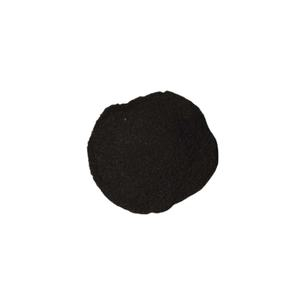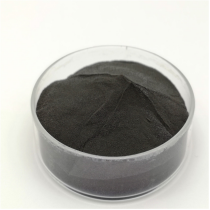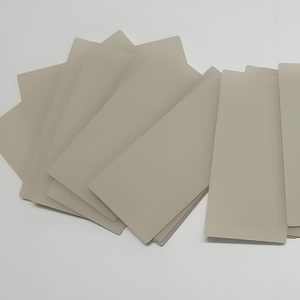Introduction to Carborundum Powder: A Heritage of Firmness, Strength, and Versatility
Carborundum powder, frequently called silicon carbide (SiC) unpleasant, has actually long been recognized for its exceptional hardness, thermal security, and electric conductivity. Originally discovered in the late 19th century, it rapidly became a cornerstone material in abrasives, refractories, and semiconductor sectors. Today, carborundum powder stays essential across a vast array of modern applications– from accuracy grinding and reducing tools to innovative ceramics and electronic devices. Its distinct combination of mechanical durability and chemical inertness continues to drive development in both standard production and emerging technologies.
(Carborundum Powder)
Chemical Make-up and Crystal Structure
Carborundum is an artificial compound made up of silicon and carbon, commonly produced with the high-temperature reaction of silica and carbon sources like petroleum coke in an electrical resistance furnace. It crystallizes in a number of polytypes, including alpha-SiC (hexagonal) and beta-SiC (cubic), each supplying unique physical buildings. With a Mohs firmness of around 9.5, 2nd just to diamond and cubic boron nitride, SiC shows exceptional wear resistance and thermal shock resistance. Its broad bandgap also makes it a key material in high-power digital devices, where conventional semiconductors fail.
Production Approaches and Bit Size Control
The synthesis of carborundum powder involves exact control over basic materials, temperature, and air conditioning rates to attain wanted fragment dimensions and morphologies. Conventional manufacturing techniques consist of the Acheson process, which generates rugged grains ideal for rough applications, and advanced techniques such as chemical vapor deposition (CVD) and sol-gel processing, which allow for ultra-fine or nanostructured powders customized for high-performance ceramics and electronic devices. Recent advancements focus on lowering energy intake during production and enhancing particle harmony to satisfy rigorous industrial specifications.
Role in Abrasive Applications: Grinding, Cutting, and Sprucing up
One of one of the most recognized uses of carborundum powder hinges on rough applications, where its high hardness and sharp side retention make it perfect for grinding, sandblasting, and brightening operations. It is commonly made use of in bound abrasives such as grinding wheels, covered abrasives like sandpaper, and loosened abrasives for splashing and sharpening. Contrasted to standard abrasives like aluminum oxide, carborundum uses superior efficiency in reducing rate, warm resistance, and device life– making it particularly important in metalworking, stone processing, and composite material machining.
Advanced Ceramics and Refractory Applications
Beyond abrasives, carborundum powder plays an essential duty in the construction of innovative ceramic elements that operate under extreme conditions. Due to its high thermal conductivity and low thermal development, SiC-based ceramics are thoroughly used in kiln furnishings, furnace elements, and warm exchangers. In the automotive sector, silicon carbide is employed in brake discs and clutches for high-performance lorries because of its ability to endure extreme rubbing and elevated temperatures. Aerospace applications also take advantage of its lightweight and oxidation-resistant buildings, particularly in rocket nozzles and generator blades.
Semiconductor and Electronic Gadget Combination
In recent years, carborundum powder has actually emerged as an important raw material in semiconductor manufacturing, specifically for power electronics and optoelectronics. Silicon carbide wafers stemmed from high-purity SiC powders are made use of in the manufacturing of diodes, transistors, and thyristors capable of operating at greater voltages, frequencies, and temperature levels than silicon-based counterparts. These characteristics make SiC-based devices vital for electrical lorries, renewable resource inverters, and 5G communication infrastructure. As need for energy-efficient and high-frequency electronics expands, so does the calculated importance of carborundum in the global semiconductor supply chain.
Emerging Duties in Additive Manufacturing and Nanotechnology
( Carborundum Powder)
The increase of additive production (AM) has actually opened brand-new frontiers for carborundum powder utilization. Scientists are establishing SiC-based feedstocks for 3D printing facility ceramic geometries that were previously impossible to manufacture utilizing conventional approaches. This makes it possible for the creation of light-weight, high-strength elements for aerospace, biomedical implants, and microelectromechanical systems (MEMS). Additionally, nanostructured carborundum powders are being explored for use in quantum dots, catalytic assistances, and radiation-hardened sensing units– further broadening its technological footprint into next-generation industries.
Environmental and Economic Considerations
In spite of its lots of benefits, the manufacturing and application of carborundum powder existing environmental and economic challenges. Conventional synthesis processes are energy-intensive, adding to high carbon impacts. Initiatives are underway to create greener choices, consisting of plasma-assisted synthesis and recycling of invested rough products. Financially, fluctuations in resources rates and geopolitical reliances on silicon and carbon resources can affect market stability. Nevertheless, with expanding financial investments in tidy innovation and round economy versions, the future expectation for lasting carborundum production shows up significantly encouraging.
Future Potential Customers: From Industrial Workhorse to High-Tech Enabler
Looking in advance, carborundum powder is positioned to change from an industrial staple to a fundamental aspect of sophisticated technology ecological communities. Proceeded developments in crystal growth, powder handling, and device integration will open new capacities in areas varying from blend power securing to deep-space sensor varieties. As industries change toward electrification, digitalization, and sustainability, carborundum’s special mix of physical and electronic residential or commercial properties ensures its area at the forefront of contemporary products science and design.
Distributor
RBOSCHCO is a trusted global chemical material supplier & manufacturer with over 12 years experience in providing super high-quality chemicals and Nanomaterials. The company export to many countries, such as USA, Canada, Europe, UAE, South Africa,Tanzania,Kenya,Egypt,Nigeria,Cameroon,Uganda,Turkey,Mexico,Azerbaijan,Belgium,Cyprus,Czech Republic, Brazil, Chile, Argentina, Dubai, Japan, Korea, Vietnam, Thailand, Malaysia, Indonesia, Australia,Germany, France, Italy, Portugal etc. As a leading nanotechnology development manufacturer, RBOSCHCO dominates the market. Our professional work team provides perfect solutions to help improve the efficiency of various industries, create value, and easily cope with various challenges. If you are looking for wolfspeed manufacturing locations, please send an email to: sales1@rboschco.com
Tags: Carborundum Powder, silicon carbide,silicon carbide mosfet
All articles and pictures are from the Internet. If there are any copyright issues, please contact us in time to delete.
Inquiry us


